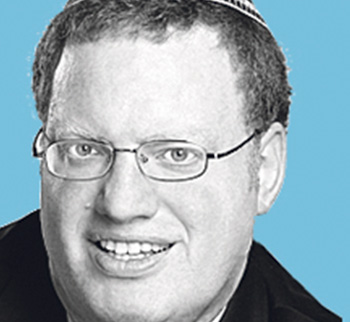Summer is the time of vacation, especially for students who look forward to such activities as camp, sleep, travel and plain old fun. School is the furthest thing from their minds. But their parents don’t enjoy a similar luxury. They’re the ones who must pay for these activities, and for those who have children in Jewish day schools, it’s the time tuition must be paid.
Apparently for those living in Toronto, such payments are less of a burden than one might think. Of the approximately 9,000 students in UJA Federation of Greater Toronto-affiliated schools approximately 70 per cent of them pay full tuition. This number speaks to the tremendous wealth in our community, where thousands of parents can afford $15,000 for elementary school and $25,000 for high school. For those with three children in the system, tuition equals the cost buying a luxury car every year. For those 30 per cent who can’t afford such sums, there are generous subsidies available, as our community promises no child will be denied a Jewish education due to inability to pay.
The above, while technically true, is very misleading. The fact that 75 per cent of day school families are paying full tuition is a most tragic statistic. Only those who are by any normal standard quite wealthy can afford an extra $60,000 year in and year out. We need not mention the wealth needed for those who want to have more than three children – which in a post-Holocaust generation with a 58 per cent intermarriage rate is something that we need more and more Jewish families to do.
When Robbins Hebrew Academy (RHA) announced it would cap tuition at 15 per cent of income for those with three or more children, families earning less than $350,000 annually were eligible. Considering that 99 per cent of Canadians earn less than $201,000 a year, this a staggering admission. Unless one is wealthier than 99 per cent of all Canadians (and at $350,000, perhaps it’s 99.8 per cent, but that’s just a guess), it’s almost impossible to afford a Jewish education. Contrary to what many believe, the vast majority of Jews are not part of the “one per cent.” Even if we are 10 times more likely to belong to this group – something that is by no means evident – what about the other 90 per cent?
These numbers go a long way in explaining the significant drop in enrolment many of our schools have seen. A number of my colleagues have been laid off due to decreasing enrolment, and layoffs are forecast to continue for the foreseeable future. Sadly, many potential students are weeded out of the system before they have a chance to start.
The correlation between those denied their right to a Jewish education and assimilation is high indeed, meaning that coming generations of Jews will be less Jewishly involved, and meaning less charitable money flowing into our institutions, creating a vicious downward spiral that has already begun – even if, as with the financial crisis, many have yet to notice it.
Capping tuition at 15 per cent of income is a simple, cost-effective and psychologically powerful method to bring back some of the families who have already left the day school system and encourage new ones to join. I have no doubt there are many who would willingly pay 15 per cent of their income for a day school education, but refuse to go before a tuition committees and ask for a handout.
To the best of my knowledge, the costs of such a program have not been calculated, but the program at RHA was, due to economies of scale, designed to be cost neutral. Even in the unlikely event such a plan were to cost $20 million a year, the cost of not doing so is much greater – initially in losing our youth and down the road a decreasing base of donors.
Comments to [email protected]
